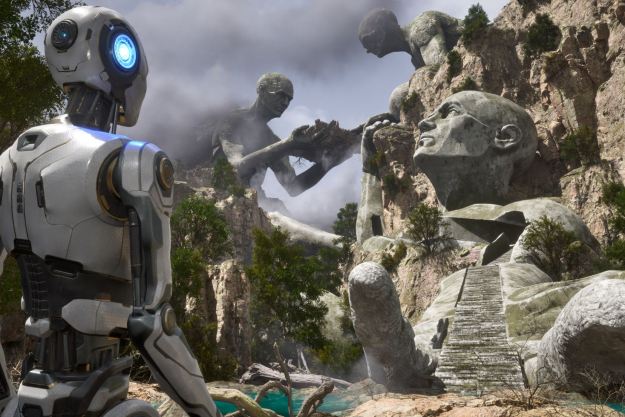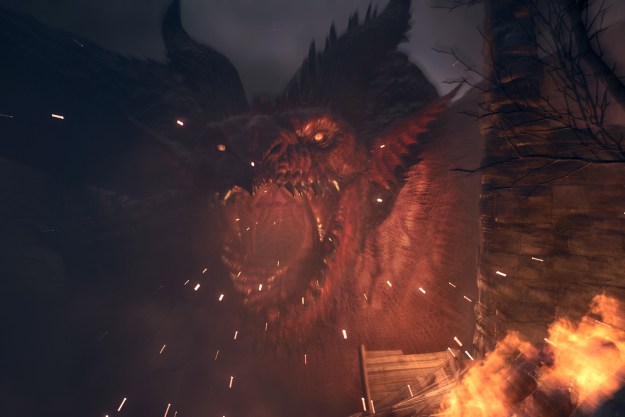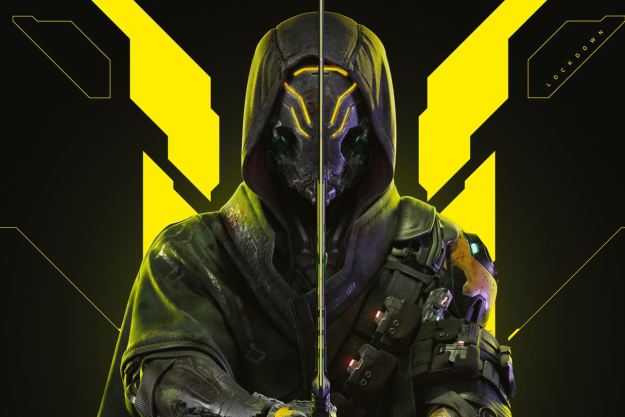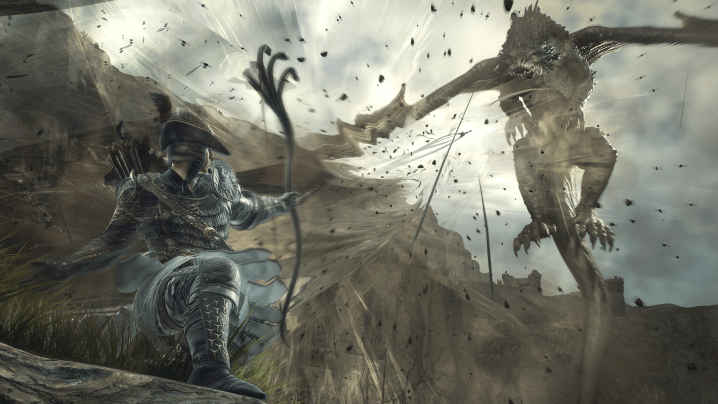
I was only 90 minutes into Dragon’s Dogma 2 when I accidentally let a child die.
The trouble started when a local shopkeeper asked me to find his son who had been dragged off by wolves. He asked me to question the locals for clues about his disappearance. I only had three hours with Capcom’s open-world RPG, so I naturally found myself skimming through some dialogue, assuming a waypoint would pop up on my map once I sleuthed out his location.
But that’s not how Dragon’s Dogma 2 works. Had I been paying more attention, I would have learned that he went off in search of blue flowers. That would tell me that I need to follow a trail of those plants in the wild to find his location. Instead, I wandered out of town aimlessly for over an hour, killing monsters before a puzzled Capcom employee questioned why I had yet to tackle that introductory objective. By the time he helped me get back on the kid’s scent, it was too late.
That anecdote taught me my first valuable Dragon’s Dogma 2 lesson ahead of its March 22 launch. This isn’t a game you can casually play between social media scrolls. If you don’t fully lock into its world, there will be consequences.
Fed to the wolves
My three-hour Dragon’s Dogma 2 demo was split into two parts. In my first session, I tried out one of the RPG’s new vocations, the Mystic Spearhand. This class put an emphasis on staggering enemies at close range. I could zip into them for a heavy hit or leap into the air and jab my spear down on them. It’s a flashy class that I was eager to try out on some big enemies — and that’s perhaps why I took my eye off more serious matters so quickly.
Rather than following any quest in my first session, I decided to trounce around the world in hunt for monsters. That’s not usually how I’d act in a curated demo like this where I’m on the clock, but that speaks to how little Dragon’s Dogma 2 holds players’ hands. There was no on-screen UI telling me what to do. When I checked my quest log, I wasn’t given a lot of exact pinpoint points to go to. It was entirely on me to pick up context clues, an old-school approach to game design that makes the title feel so different from its modern contemporaries.
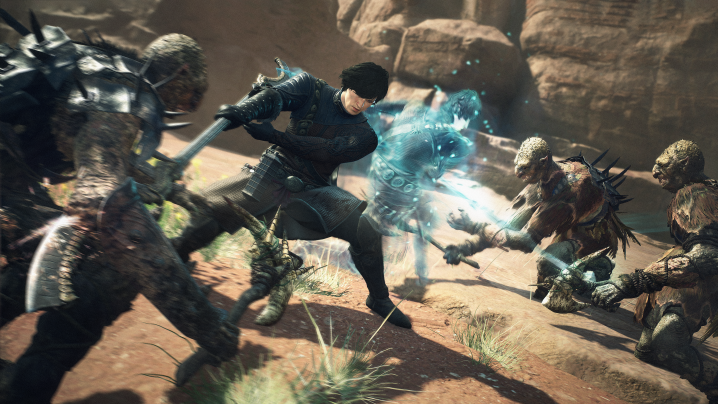
I had to learn that the hard way. Rather than looking for a lost kid, I instead took my party of pawns out for a scenic tour of the world. I spent most of the 90 minutes getting the hang of combat as I took down increasingly larger foes. It was a comedy of errors. An overaggressive fight with one troll on a cliff left me tumbling into the water below. A clash with a dragon way above my power level flattened me like a pancake. My least graceful death came when I simply stepped in some goo and instantly died.
Though I wasn’t really progressing any story, I began to see the appeal of Dragon’s Dogma 2 in those escapades. It presents a dangerous exploration sandbox filled with emergent narrative potential, not unlike Elden Ring. My most memorable moments didn’t come from its quests, where I sat through some eye-rolling conversations with faux-medieval NPCs. Instead, all of my favorite moments came from goofing off.
That attitude culminated in my greatest victory. Near the end of my first session, I found myself battling a massive troll along a river’s edge. As I thwacked it with my spear, I noticed that it had started to fall off balance, hobbling on one leg as it tried to regain its composure. Wondering if I could knock it over in its vulnerable state, I picked up a boulder and chucked it at its leg. That did the trick. The troll went tumbling into the river, which instantly killed it. That’s the exact moment where Dragon’s Dogma 2 clicked. That’s also probably the exact moment when wolves began tearing into the little kid I was neglecting to save.
Reading required
While I failed that quest, I wasn’t mad about it. If anything, I was impressed that it actually allowed me to screw up and face consequences rather than simply asking me to restart. I’d see even more of that in my second session, which opened with an even bigger failure. Here, I took on the role of an Archer, and I quickly found myself helping a city foil an assassination attempt on a queen. I’d learned my lesson, so I decided to stick to the quests this time and actually pay attention. That led me to another series of hard lessons.
First, I’d have to return to a temple during the next morning. To pass the time, I’d need to find a bonfire out in the world and make camp. I’d find one after a frustratingly long trek through the region, though I’d have to schlep all the way back to town after resting. My first mistake came when I tried to run past every enemy to return in time. As I did that, two of my party members were downed by pesky harpies. Worried I wouldn’t get to town in time if I stopped to rescue them, I just pressed on. Mistake number one.

Mistake number two came when I actually got to the temple. A quest-giver gave me a description of the would-be assassin, noting that they had their hair tied back and an injured right arm. I began looking through a crowd of worshippers for anyone matching that description. As I carefully inspected each person, a clock was ticking. I only had so much time before the ceremony ended. When I deduced the potential culprit, I suddenly realized I had no idea how to apprehend them. Talking to them did nothing, and I couldn’t report back to the quest-giver. Struggling to figure it out, I ran out of time.
Let’s just say that the townsfolk weren’t happy with what happened next.
While I had read the quest more carefully this time, I still wasn’t scrupulous enough. I’d eventually realize that the quest log told me to grab the suspect once I found them. I thought it was just some casual language, but it meant it quite literally. Any other game might have nudged me harder, highlighting the word grab in a bright color or having an NPC over my shoulder repeatedly saying, “When you find the assassin, remember to grab them!” Dragon’s Dogma 2 throws that kind of design out the window and puts the onus entirely on the player.
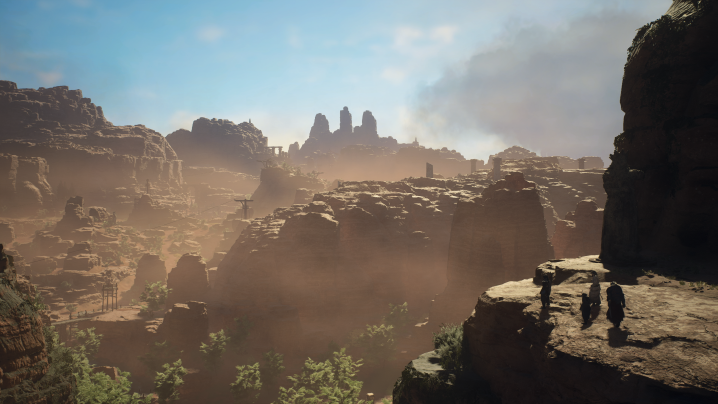
That philosophy is bound to be a bit polarizing. While I enjoy that concept, I imagine that it’ll leave some series newcomers who are casually checking out the sequel a bit frustrated. Dragon’s Dogma 2 defies every established design rule of the modern era to offer a more freeform adventure that asks a lot of players. Don’t expect to find many yellow-painted trails signposting where to go. That makes it the kind of game that will earn itself a very loyal fanbase, as it rewards players who buy all the way into it.
Whether or not I’ll be among those fans is yet to be seen. I can see what’s special about Dragon’s Dogma 2, but that’s also hard to communicate when plopped into the middle of it all with no tutorial. I spent my three hours learning the language of it all through repeated failure and aimless wandering through an, at times, empty world. I know I won’t get a true feel for it until I sit down with it from minute one and toss all time limits and distractions to the side. Dragon’s Dogma 2 demands your full attention, and I get the sense that it’ll earn it, too.
Dragon’s Dogma 2 launches on March 22 for PS5, Xbox Series X/S, and PC.
Editors' Recommendations
- I smelled the world of Dragon’s Dogma 2 and it was putrid
- Dragon’s Dogma 2’s first updates will tackle its PC performance issues
- Dragon’s Dogma 2 changed how I look at fast travel in video games
- Dragon’s Dogma 2: release date speculation, trailers, gameplay, and more
- The leaks are correct: Dragon’s Dogma 2 launches in March


